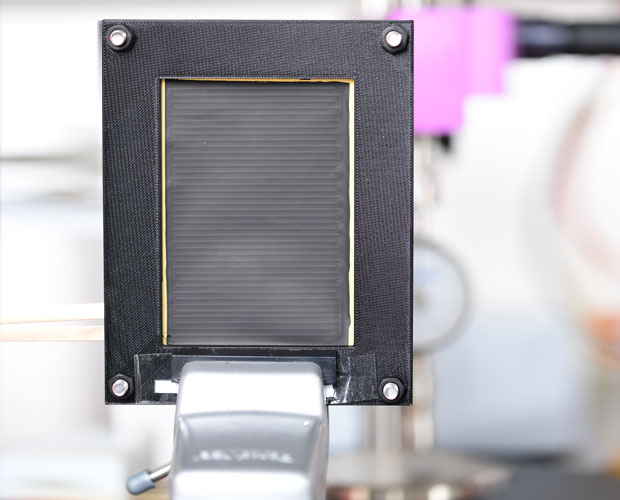
The Fraunhofer ISC has made significant contributions to the successful achievement of a milestone in the EU project PHOENIX with its materials research and technology expertise. PHOENIX is developing sensors and triggers for self-healing batteries. As part of the milestone, a new generation of sensors and triggers with optimized properties has been produced. The prototypes have already been delivered to the partners for evaluation.
For PHOENIX, the Center for Smart Materials and Adaptive Systems (CeSMA) of Fraunhofer ISC developed HASEL actuators that apply mechanical forces to stressed battery cells. HASEL stands for "hydraulically amplified self-healing electrostatic" – a new class of self-monitoring artificial muscles in the form of high-performance actuators. These couple electrostatic and hydraulic forces to achieve various action modes, initiating pressure-dependent self-healing effects in the PHOENIX battery cell. The 300 µm thin, polymer film-based HASEL actuators were able to generate pressures of up to 70 kPa (0.7 bar).


